Green or Black Mussels: Which Should You Choose?
Green vs. black mussels represent two popular shellfish varieties enjoyed around the world.
Oceanic delicacies bring distinct flavors and characteristics to countless seafood dishes across various cuisines.
Many food enthusiasts appreciate their versatility in pasta, paella, or simply steamed with garlic and butter.
The nutritional profile of both types includes impressive amounts of protein, omega-3 fatty acids, and essential minerals.
Each variety has its own loyal following, with preferences often depending on regional availability and culinary traditions.
After reading through our detailed comparison, you will understand exactly which mussel best suits your next seafood feast.
Exploring Black Mussels
Black mussels belong to the expansive Mytilidae family of bivalve mollusks, mainly found across North Africa, Arctic regions, and both Atlantic and Pacific oceans.
Modern farming methods now allow quick growth and harvesting in many countries, making these seafood treats more accessible and affordable for everyone.
Different regions use various names for these tasty shellfish - European countries typically call them Mediterranean Mussels or Mytilus Galloprovincialis.
Southern Africa claims the Choromytilus Meridionalis variety as its native black mussel species.
People living near the north Pacific, Arctic, and north Atlantic areas know them as Mytilus Trossulus.
Discovering Green Mussels
Green mussels remain a rare, nutrient-rich food choice that many people enjoy without knowing much about their background.
These sea creatures, scientifically called Perna canaliculus, also go by names like New Zealand green-lipped mussel, New Zealand mussel, or Kuku.
Their story begins in New Zealand waters before they gained popularity across different regions including Asia, Africa, and America.
The distinctive shellfish has become sought after worldwide despite most consumers having limited knowledge about what makes them special.
Green vs Black Mussels: The Comparison
Green mussels share many physical traits with their black counterparts, both featuring that distinctive asymmetrical, teardrop shape we all recognize.
Let's explore what makes these shellfish unique beyond their shell color and learn why one appears on dinner plates more frequently than the other.
| Feature | Black Mussels | Green Mussels |
| Location | Found globally in cooler waters, especially Atlantic & Pacific coasts. Major farms: South Africa, Canada, USA, China. | Mainly found in New Zealand, with farming spreading to Asia, South Africa, and India. Rare in US markets. |
| Size | Smaller, average ~2.5 inches, max ~3 inches. | Larger, can reach up to 6 inches; New Zealand green-lipped mussels are twice the size of black mussels. |
| Color | Dark brown or dusky shells due to zooplankton diet. | Brown shells with green edges, young are bright green, adults darker green to brown (due to phytoplankton diet). |
| Taste | Stronger, more savory, slightly fishy and salty with sweet undertones. Suited for simple cooking (steaming, boiling, grilling). | Milder, less salty, sweeter, softer flavor; good for those new to mussels or preferring less briny taste. |
| Texture | Softer, tender, less chewy, less flesh. | Firmer, chewier, more flesh, stays tender but holds shape well when cooked. |
| Farming | Easy to farm worldwide; adaptable. Common in native New Zealand waters. | Limited farming locations, more expensive and regulated due to rarity; harvested after ~15 months. |
| Availability | Widely available fresh or frozen worldwide; easy to find. | Rare outside New Zealand; fresh green mussels mainly available locally or imported at higher cost. |
| Affordability | Less expensive due to wide availability and easier farming. | More expensive due to limited supply and exclusivity; about twice the price of black mussels. |
| Shelf Life | 7-10 days refrigerated; 2-3 months frozen; up to 2 years at -18°C. | Same as black mussels under proper storage conditions. |
| Nutritional Value | High protein, good iron source; 9 calories per mussel; benefits bone, muscle, heart health. | Higher nutritional value; rich in chondroitin, glucosamine, omega-3s (DHA & EPA), vitamins, minerals, protein (~36%); aids joint recovery, brain health, anti-inflammatory benefits, mood regulation. |
Location
Black mussels are widespread and commonly found along cooler coastal waters worldwide, especially around the Atlantic and Pacific Oceans. South Africa leads in black mussel farming, with significant production also in Canada, the USA, and China.
In contrast, green mussels have a much more limited natural habitat, primarily around New Zealand’s nutrient-rich waters. While farming of green mussels has expanded to Asia, South Africa, and India, they remain rare and harder to find in many markets, especially in the US.
Size
Size is a notable difference between the two mussel types. Black mussels are generally smaller, averaging about 2.5 inches and rarely exceeding 3 inches in length. Green mussels, particularly the New Zealand green-lipped variety, are much larger, often growing up to 6 inches - more than twice the size of black mussels.
This larger size also makes green mussels more expensive in the market.
Color
The shell color difference comes mainly from their diets. Black mussels feed primarily on zooplankton, which gives their shells a dark brown or dusky hue.
Green mussels consume phytoplankton, which imparts a brown shell with striking green edges. Young green mussels are often bright green, while adults darken to greenish-brown.
Taste
Both mussels share a slightly sweet, salty ocean flavor. Black mussels offer a stronger, more robust taste with savory, fishy, and salty notes, making them suitable for simple cooking methods that preserve their natural flavor.
Green mussels have a milder, sweeter, and cleaner taste, making them a preferred choice for those new to mussels or those seeking a less intense seafood flavor.
Texture
Black mussels have a softer, more delicate texture with less chewiness and less flesh overall. They become tender and soothing when cooked.
Green mussels are firmer and chewier, with more flesh, yet they stay tender without falling apart during cooking. Among mussel varieties, green mussels are the most tender and meaty but require careful cooking to avoid becoming tough.
Farming
Black mussels are easier to farm and more widely cultivated globally due to their adaptability. Historically harvested by native islanders in New Zealand, they have become globally popular since the 1960s.
Farming methods often involve mussels attaching to long lines in cooler waters and harvesting after 8 to 12 months. Green mussel farming is more limited and costly, primarily confined to New Zealand and a few other locations.
They require about 15 months to mature in nutrient-rich waters and are subject to strict regulations to prevent overexploitation.
Availability
Black mussels are widely available fresh or frozen worldwide due to their extensive farming and adaptability. Green mussels are rare outside New Zealand and often only available fresh locally or imported at higher prices.
Their limited availability and exclusivity make fresh green mussels harder to find globally.
Affordability
Black mussels are generally much cheaper because of their widespread availability and easier farming practices. Green mussels, due to their limited supply and exclusivity, cost roughly twice as much as black mussels, although they remain less expensive than many other seafood options.
Shelf Life
Both black and green mussels have similar shelf lives: about 7 to 10 days refrigerated and 2 to 3 months frozen. When stored properly at -18°C, they can last over two years without losing flavor or quality.
Nutritional Values
Black mussels provide a low-calorie, high-protein option rich in iron, which supports muscle building, heart health, and anemia prevention. Green mussels offer even richer nutrition, containing high levels of chondroitin, glucosamine, omega-3 fatty acids (including DHA and EPA), and various vitamins and minerals.
These nutrients support joint health, brain function, blood circulation, anti-inflammatory benefits, and mood regulation. Green mussels have about 36% protein and are a cost-effective protein source.
Scientific studies recommend 1000–1500 mg of green mussel extract daily for optimal health benefits.
Here is a table abour the nutrient of these.
| Nutrient | Black Mussels | Green Mussels |
| Calories | 3 | 2.1 |
| Total Fat (g) | 3 | 2.1 |
| Saturated Fat (g) | 0 | N/A |
| Cholesterol (mg) | 0 | 27 |
| Sodium (mg) | 572 | 429 |
| Protein (g) | 15 | 12 |
| Omega-3 (g) | 0.5 | 0.5 |
Other Mussel Varieties to Savor
Mussels come in many varieties beyond the well-known Black and Green types. The ocean waters around the world host numerous lesser-known mussel species that don't get as much attention as their popular cousins.
These hidden gems can be found clinging to rocks and seafloors in various marine environments, each with its own unique characteristics and flavors.
Blue Mussels
Blue mussels, known by names like Mytilus edulis, bay mussels, farmed mussels, and Prince Edward Island (PEI) mussels, rank as the world's third most popular mussel variety. Their shells display rich blue, purple, or brown hues, making them easy to spot along coastlines.
These sea creatures attach firmly to large rocks on beaches where they make their homes. Most blue mussels grow to about 10 cm in length, though some exceptional ones that thrive in ideal conditions can reach an impressive 20 cm.
Many seafood lovers appreciate them for their distinctive flavor and widespread availability in coastal markets.
Zebra Mussel
Zebra mussels, scientifically called Dreissena polymorphic, originally made their way to the United States in the 1980s through large ships that released European ballast water into the Great Lakes. These small creatures now live throughout lakes and rivers across America, feeding on both phytoplankton and zooplankton just like their black and green mussel relatives.
Female zebra mussels are incredibly productive, laying between 300,000 and one million eggs annually, though water conditions only allow about 2 percent of these to develop into mature mussels. Their rapid spread and high reproduction rate have made them a significant concern for many American waterways since their accidental introduction decades ago.
Horse Mussels
Horse Mussels, also called Modiolus, stand out as major ocean dwellers with impressive dimensions reaching up to 20 cm. The beautiful sun-bleached purple shells make them easy to spot among other sea creatures.
Most of these mussels make their homes at depths between 10 to 25 meters in ocean waters. Research teams have found certain specimens living much deeper, sometimes as far down as 280 meters below the surface.
For survival, these remarkable creatures firmly attach themselves to solid objects such as rocks or even turtles in their underwater habitat.
The Comparison of Mussels and Other Seafood Types
Telling the difference between mussels, clams, oysters, and scallops can be tricky for most of us since they're all bivalve mollusks. With below insight, you can easy tell them apart.
Mussels Vs. Clams
Let's see how mussels and clams are different.
| Feature | Mussels | Clams |
| Habitat | Found in both saltwater and freshwater | Usually found in freshwater |
| Shell Shape | Long and less circular | More circular shell shape |
| Attachment | Attach to surfaces in water | Burrow under seabed/surface |
| Bodily Organs | Do not have heart, digestive tract, or circulatory system | Have heart, digestive tract, and circulatory system |
Savory Mussels Face Off Against Ocean’s Finest Delicacies
Telling the difference between mussels, clams, oysters, and scallops can be tricky for most of us since they're all bivalve mollusks. These seafood varieties may look similar at first glance, but each has unique characteristics that set them apart.
Mussels typically have dark, oval shells while clams are rounder with smoother surfaces. Oysters stand out with their irregular, rough shells, and scallops are easily spotted by their fan-shaped shells with ridges.
Beyond appearances, they also differ in taste and texture - from the briny flavor of oysters to the sweet tenderness of scallops. Learning these differences makes seafood shopping less confusing and helps you pick the perfect shellfish for your next meal.
Mussels Vs. Oysters
Mussels and oysters have several key differences that set them apart; check below table for more details.
| Feature | Mussels | Oysters |
| Shell Shape | Wedge-shaped, thin, and smooth | Oval-shaped, rough, thick, calcified |
| Habitat | Live in both freshwater and saltwater | Live only in brackish saltwater |
| Size | Smaller | Larger |
Mussels Vs. Scallops
Mussels and scallops share bivalve mollusk classification, but they differ in key ways, such as:
| Feature | Mussels | Scallops |
| Shell Shape | Wedge-shaped | Fan-shaped |
| Shell Strength | Strong, tightly closed shells | Weaker shells, easily split after harvesting |
| Preservation | Can be frozen or soaked in water | Typically preserved by freezing |
| Movement | Cannot swim, move by muscular foot | Can swim by squirting water using adductor muscles |
How to Pick the Perfect Mussels
Selecting the right mussels is key when shopping for either fresh or raw varieties. Before heading to the store, arm yourself with some helpful knowledge to make the best choice.
Look For Tightly Closed Shells
Checking if mussel shells are open or closed tells you right away about their freshness. Closed shells mean the mussels are still alive and safe to eat, while open shells signal they've died and should be thrown out.
Bad mussels can make you sick when eaten, so this simple test helps keep your seafood meals both tasty and safe. Always take a moment to inspect each shell before cooking - this quick check is an easy way to avoid stomach troubles later on.
Smart seafood choices start with knowing these basic signs of quality.
Look For Clean Mussels
Mussels should have clean shells before you buy them, as this indicates proper handling and preparation for sale. Dirty shells often mean poor harvesting practices or inadequate cleaning at the market.
No need to panic if you end up with some grimy specimens though - simply hold them under running water with good pressure to wash away any sand or dirt clinging to the outside. This quick rinse ensures your seafood is ready for cooking without any unwanted grit that might otherwise end up in your delicious meal.
Look For Enact Shells
Carefully check mussel shells when shopping to avoid any with cracks or chips. These damaged shells often signal poor handling during farming or shipping, and might even mean the mussel is dead.
Bacteria can easily sneak through these shell openings, making the seafood potentially dangerous to eat. A quick inspection of their outer coverings takes just moments but helps ensure you bring home only the freshest, safest mussels for your meal.
Taking this small precaution while selecting your seafood makes a big difference in both taste and food safety.
Smell The Mussels
Fresh mussels should have a clean, briny, ocean-like smell. If they smell overly fishy or off, it’s best to avoid buying them.
Always check their scent before purchasing to ensure freshness and avoid wasting money.
How to Store and Clean Mussels Properly
Following these guide will help ensure your mussels are clean, fresh, and delicious when cooked!
Storing Mussels
Cleaning Mussels
Cooking Methods for Mussels
Here are popular ways to cook mussels to try at home.
Steaming
Steaming mussels remains a popular cooking method that keeps their delicious taste intact while being super easy to prepare. Black mussels need less time in the pot than their green counterparts - just six to seven minutes until they're perfectly tender, while green mussels require ten to fifteen minutes for ideal doneness.
Anyone can master this simple technique and impress others with their seafood skills. The process preserves all the natural flavors that make mussels such a treat on dinner tables worldwide.
Grilling
Grilling mussels for a BBQ with close friends couldn't be easier and makes for an impressive treat. Simply heat your grill until it reaches a high temperature, then place fresh mussels directly on the cooking grate - that's the entire process!
In just a few minutes, you'll have perfectly grilled mussels that taste amazing and show off your outdoor cooking skills. The simplicity of this method means less time working over the hot grill and more time enjoying good company and delicious food at your backyard gathering.
Pan-Roasting Mussels
Pan-roasted mussels make an incredible quick dinner that's both easy and satisfying. Just grab a heavy pan or cast-iron skillet, toss in your fresh mussels, and stir them around until those shells pop open to reveal the tasty treasures inside.
For extra flavor, a sprinkle of black pepper or some freshly minced parsley does wonders with these seafood gems. This simple cooking method lets the natural flavors shine through while keeping your kitchen time minimal.
Got Questions? We’ve Got Solutions
1. Can I eat mussels if I have a shellfish allergy?
No, you should avoid both green and black mussels if you have a shellfish allergy. Mussels can cause severe allergic reactions in people with shellfish allergies.
2. How long do fresh mussels last in the refrigerator?
Fresh mussels, both green and black, should be used within 1-2 days of purchase. Store them in a bowl covered with a damp cloth, not in water or an airtight container.
3. Are mussels sustainable seafood choices?
Yes, farmed mussels are considered one of the most sustainable seafood options. They don't require feed or antibiotics and actually help filter and clean the water they grow in.
4. How can I tell if mussels have gone bad?
Discard any mussels that are open and don't close when tapped, have broken shells, smell fishy, or feel unusually heavy (which indicates they're dead and full of sand).

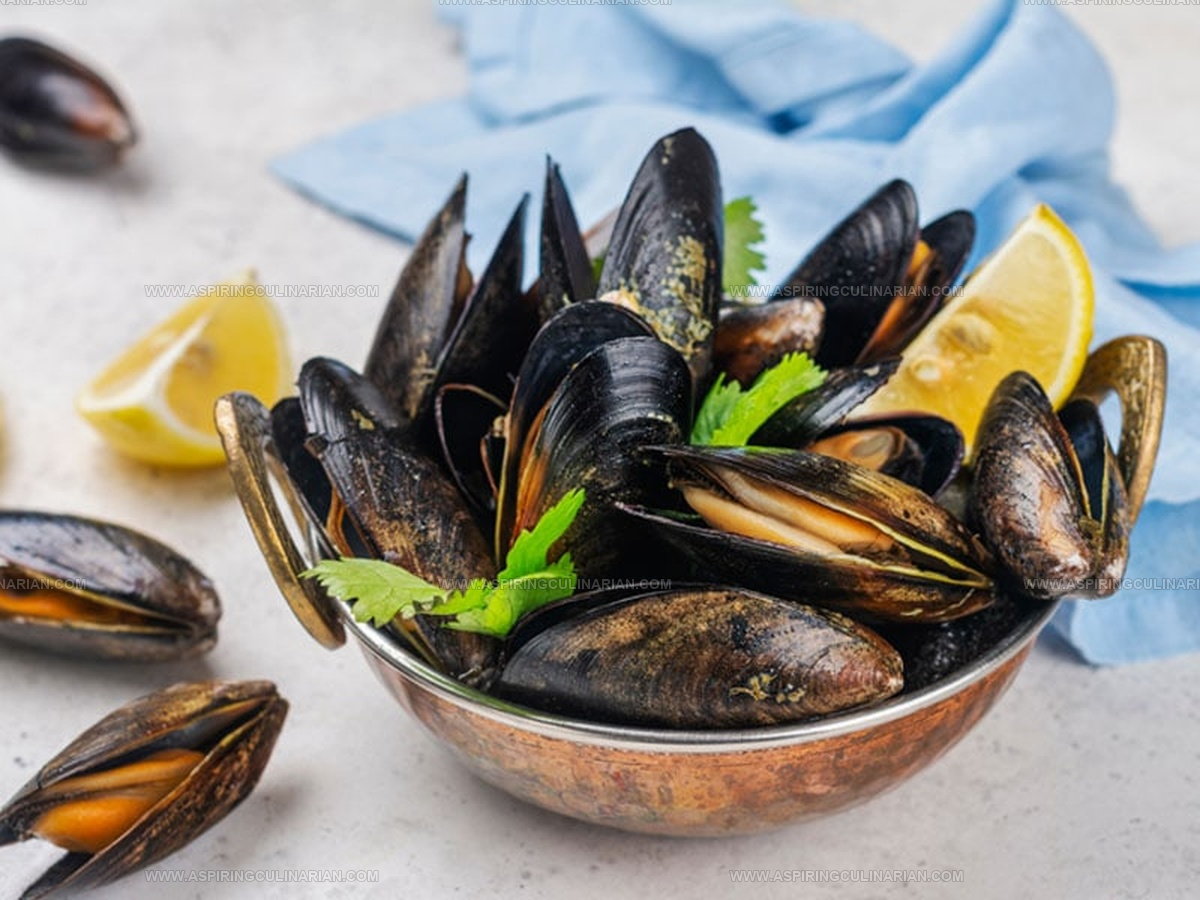
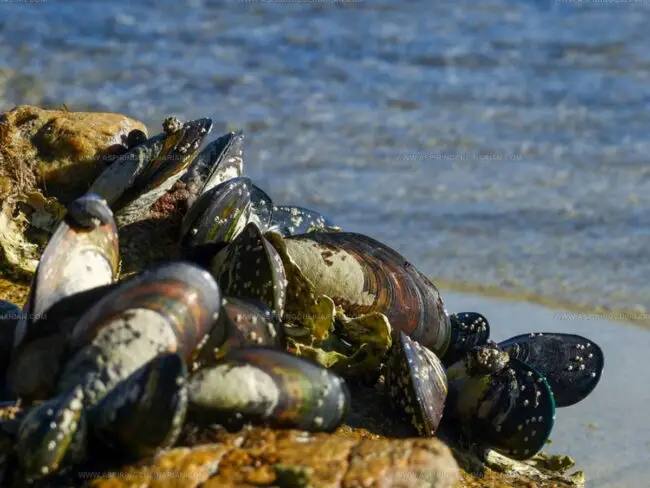
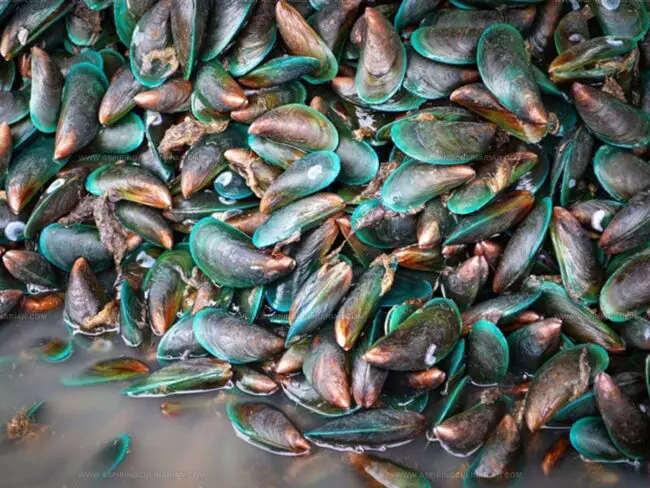
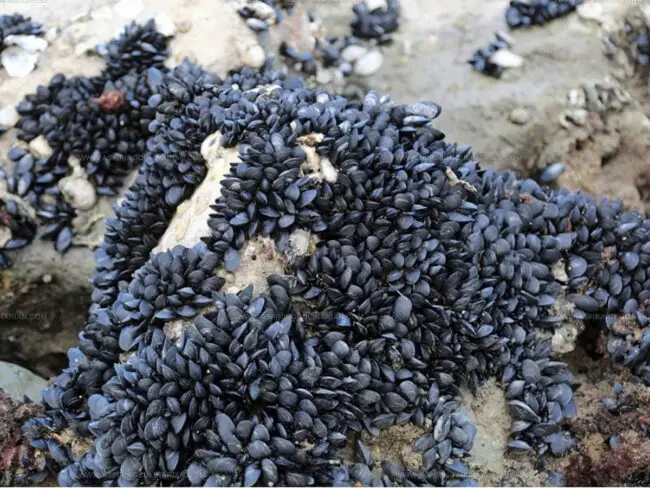
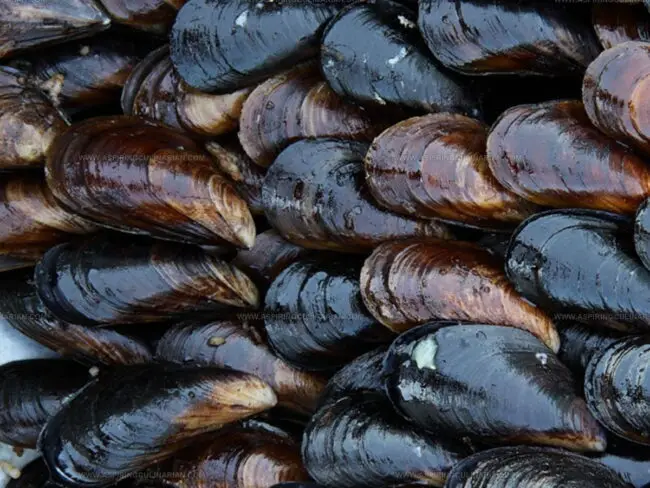
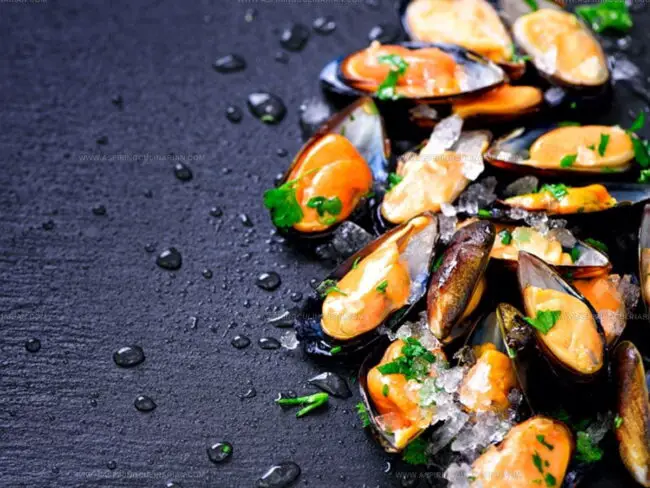
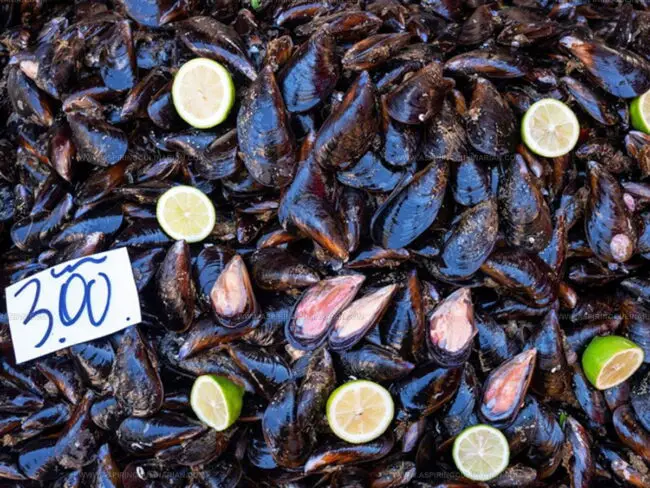
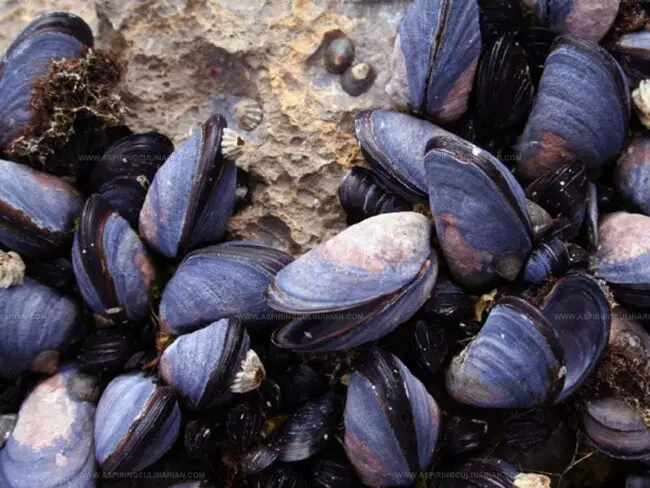
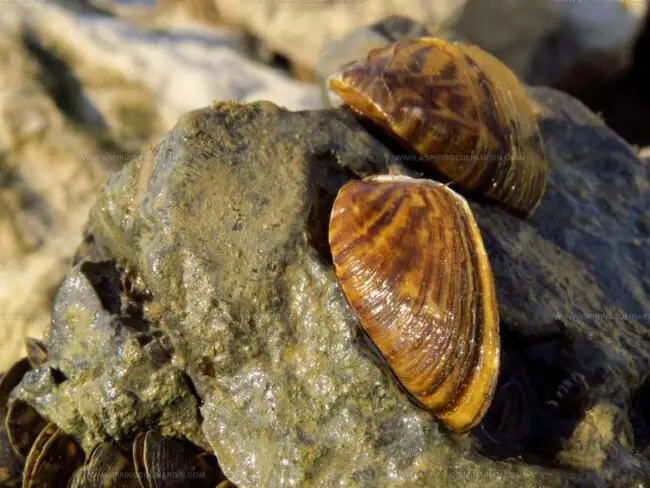
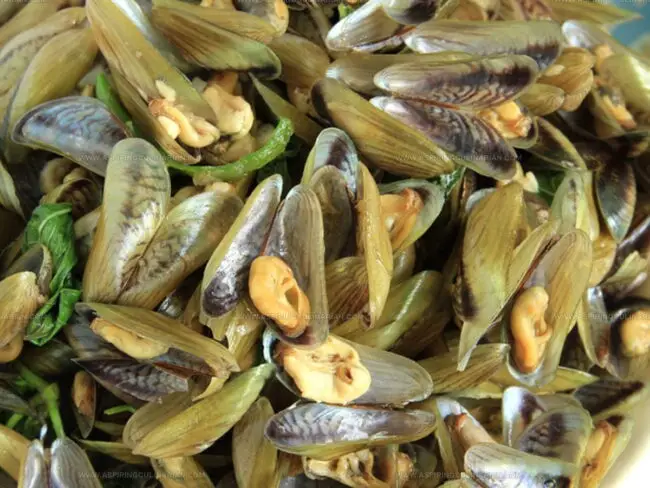
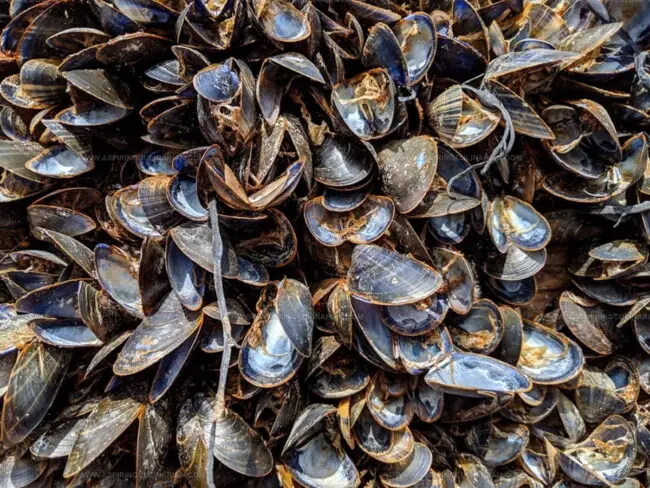
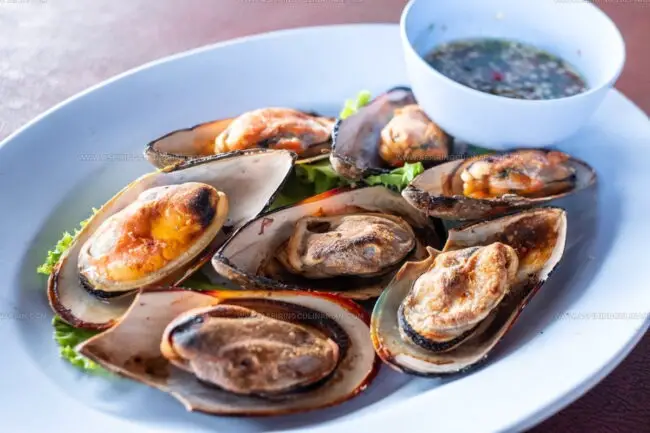
Nathaniel Brooks
Founder & Recipe Developer
Expertise
Farm-to-table cuisine, Seasonal recipe development, Culinary storytelling
Education
Ivy Tech Community College – Indianapolis, IN
Culinary Arts / Hospitality Administration & Events
Focused on hands-on training in classical and modern culinary techniques.
Nathaniel’s story starts in the foothills of the Appalachian Mountains, where farm stands, backyard gardens, and old family recipes shaped his love for real food. After graduating from Ivy Tech Community College in Indianapolis, he spent years working in farm-to-table kitchens, learning how to turn local, seasonal ingredients into something memorable.
Today, Nathaniel pours that same spirit into every single recipe on Aspiring Culinarian – recipes that feel real, comforting, and connected to the land. When he’s not in the kitchen, you’ll find him foraging wild herbs, chasing sunsets with his camera, or writing about the flavors that shaped his roots.